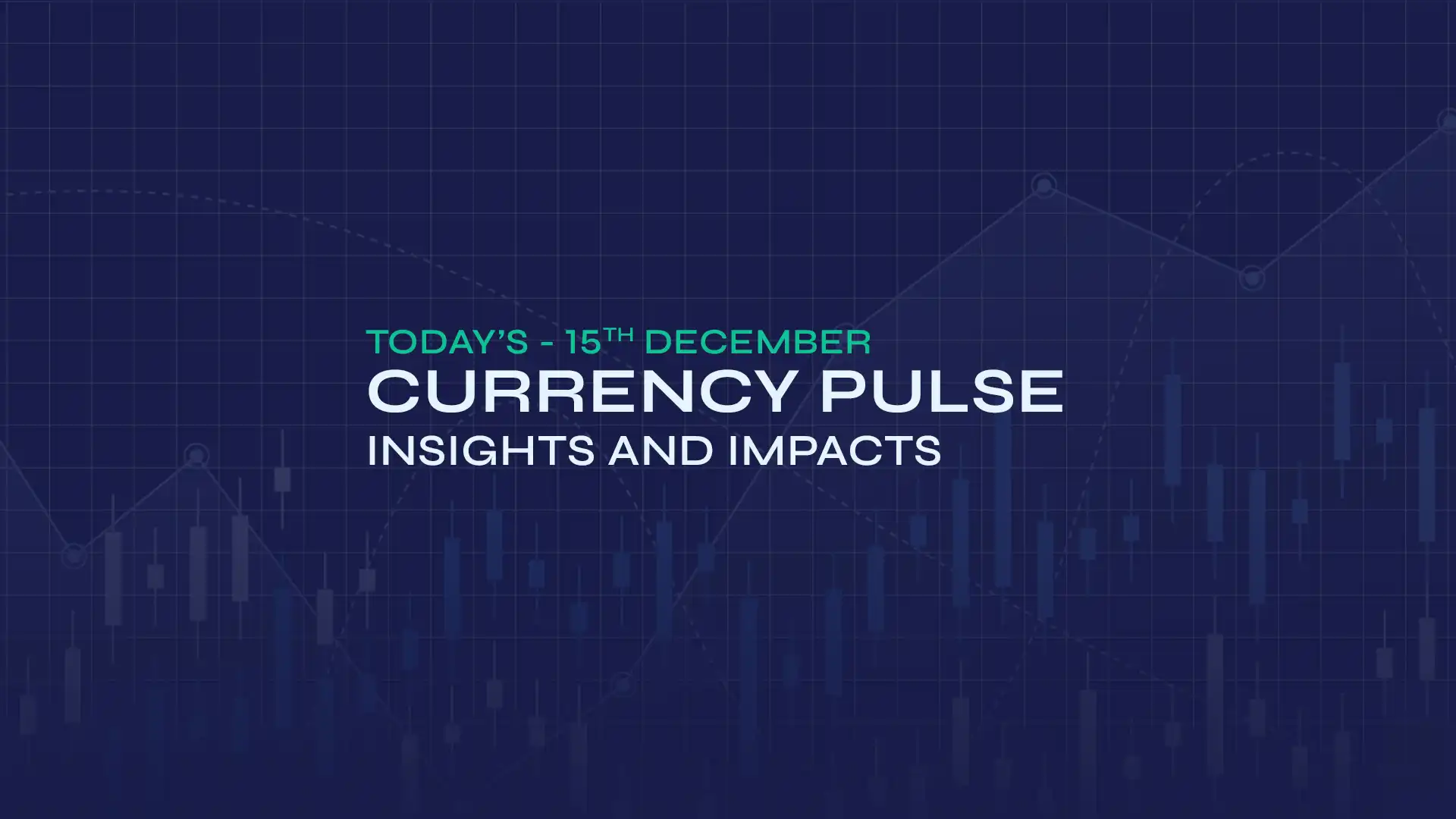GBP/USD traded near 1.3367, as marketers remain cautious ahead of the Bank of England's (BoE) interest rate decision. Market anticipates a 25 bps interest rate cut, bringing the BoE's main reference rate down to 4.0% from 4.25%. Recent macroeconomic data have been concerning, with subdued consumer demand and labour market conditions affecting the BoE's policy outlook. The Gross Domestic Product (GDP) shrank by 0.1% month-on-month in May, following a 0.3% decline in April. The Consumer Price Index (CPI) increased by 3.6% year-on-year, up from 3.4% in May. Meanwhile, the core annual CPI rose to 3.7%, from 3.5% in May. The ONS reported that food prices increased in June by the largest margin since February 2024, and also noted that services inflation remains steady at 4.7%. The unemployment rate was 4.7% in April, up from 4.4% at the start of the year. Price pressures in the UK remain high due to rising energy and food costs, and are forecast to grow as the Labour Party plans to increase welfare spending. This increase is expected to add £5.5 billion to the economy by 2029–30, based on data from the UK Institute for Fiscal Studies (IFS).
Conversely, the July US Nonfarm Payrolls (NFP) report indicated a slowdown in the labour market, reinforcing expectations that the US Federal Reserve (Fed) will implement a 25 basis point rate cut in September. On Wednesday, Federal Reserve Bank of San Francisco President Mary Daly stated that the Fed still has some ground to cover in its fight against inflation, despite overall progress. She noted that the Fed may need to act soon without having the complete picture. Boston Fed President Susan Collins and Fed Board member Lisa Cook warned that ongoing uncertainty remains a significant obstacle to effective policy implementation and complicates the central bank's ability to manage interest rates effectively. Additionally, US President Donald Trump announced on Tuesday that he will nominate a new Fed Chair and successor to Kugler by week's end, naming his preferred candidates: White House economic adviser Kevin Hassett, former Fed governor Kevin Warsh, and two others. He also confirmed that Treasury Secretary Scott Bessent is not among his choices for the Fed's Chair. "The economy is slowing, and the Fed needs to respond to this slowdown," Minneapolis Fed President Neel Kashkari said in an interview. Kashkari also noted, "It may still be relevant in the near term to start adjusting the policy rate, and two rate cuts this year still seem appropriate." When asked whether interest rate cuts are suitable at a time when the impact of tariffs has begun affecting the economy, Kashkari replied, "If inflation does rise because of tariffs, the Fed could pause or even raise rates; meanwhile, the data on slowdown is clear."
Apart from US weekly Initial Jobless Claims, investors will closely watch the monetary policy statement and BoE Governor Andrew Bailey's press conference to gauge the GBP/USD pair's movement in today's session.
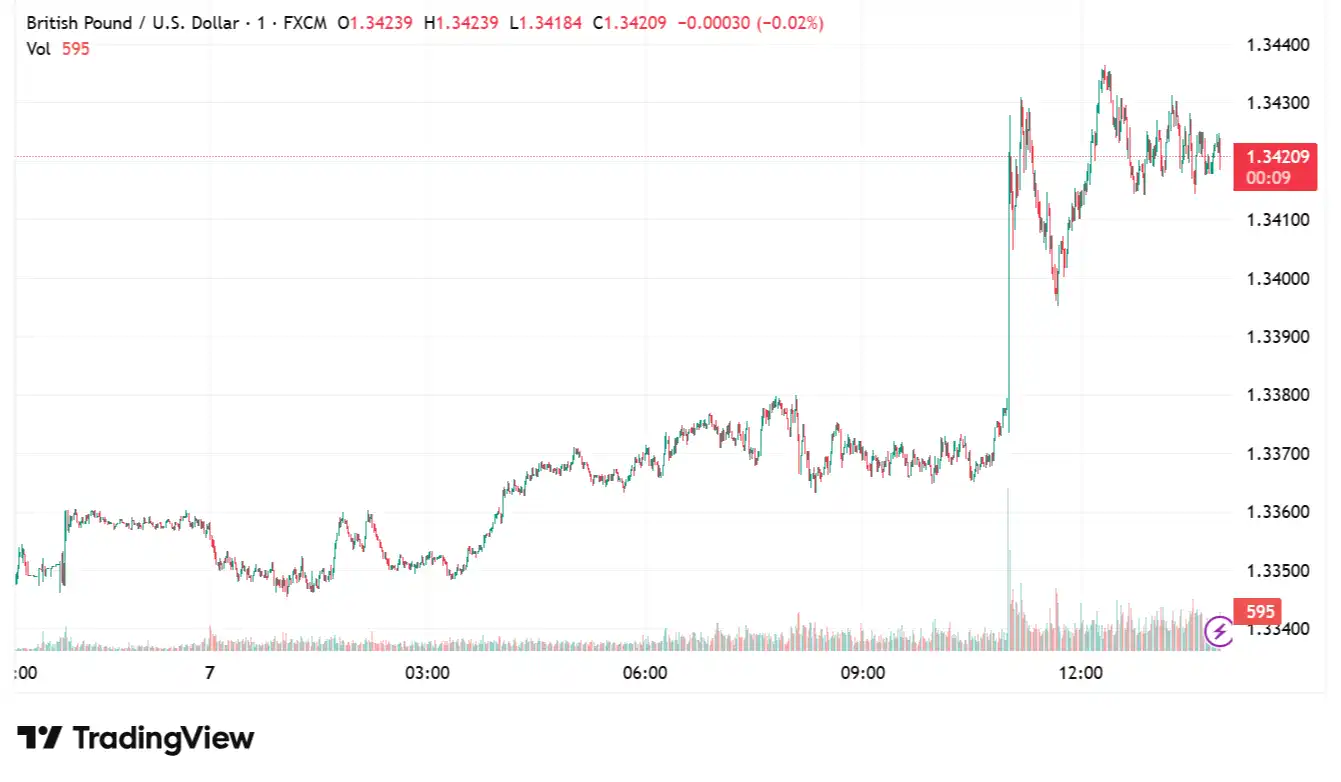
AUD/JPY Gains After Aussie/Chinese Trade Balance Data
AUD/JPY edged higher near 96.01, following the release of trade balance data from Australia and China. The Australian Bureau of Statistics (ABS) reported that Australia's trade surplus increased to 5,365 million month-on-month in June, surpassing the expected 3,250 million and the previous 1,604 million (revised from 2,238 million). Exports rose by 6.0% in June, while imports fell by 3.1%. China's trade balance reached CNY705.10 billion in July, up from the previous figure of CNY585.96 billion. Exports increased by 8.0% year-on-year in July, following a 7.2% rise in June, while imports grew by 4.8% year-on-year against 2.3% previously recorded. In US dollars, China's trade balance stood at +98.24 billion, compared to the expected +105 billion and the previous +114.77 billion. China's Caixin Services Purchasing Managers' Index unexpectedly jumped to 52.6 in July from 50.6 in June. The market forecast was for a reading of 50.2 in the same period. Australia's Ai Group Manufacturing PMI improved by 4.9 points to -23.9 in July, indicating a slight recovery but still signifying a deep contraction in the sector. Meanwhile, the Ai Group Australian Industry Index, a key indicator of private-sector activity, rose by 5.8 points to -3.2, its strongest reading in three years, maintaining the gradual recovery trend that began in mid-2024.
On the tariff front, US President Donald Trump warned China, Australia's key trading partner, that he might impose additional tariffs similar to the earlier 25% levies on India over its Russian oil imports, depending on future developments. Navarro added that the US is watching China's energy dealings with Russia but advised, "Let's wait and see," indicating no immediate plans for action. During their latest talks in Stockholm, Sweden, the US and China could not agree on extending the 90-day tariff suspension. This pause is set to end on August 12, with the final decision up to President Trump. Meanwhile, US tariffs have been reduced from 145% to 30%, and Chinese tariffs from 125% to 10%.
On the yen's front, uncertainty regarding the timing of the next interest rate hike by the Bank of Japan (BoJ) and a generally positive risk sentiment limit the safe-haven JPY. Recent reports stated that US President Donald Trump could impose an additional 15% tariff on all Japanese imports. The US will not grant exceptions to Japan for products that already face tariffs exceeding 15%, the report added. This introduces an extra layer of uncertainty amidst recent political developments in Japan. In fact, the ruling Liberal Democratic Party's loss in the upper house election on July 20 has raised concerns about Japan's fiscal health, amid calls from the opposition to increase spending and cut taxes.
US-China trade tensions and the upcoming Reserve Bank of Australia (RBA) policy meeting will shape the market sentiment around the AUD/JPY exchange rate.
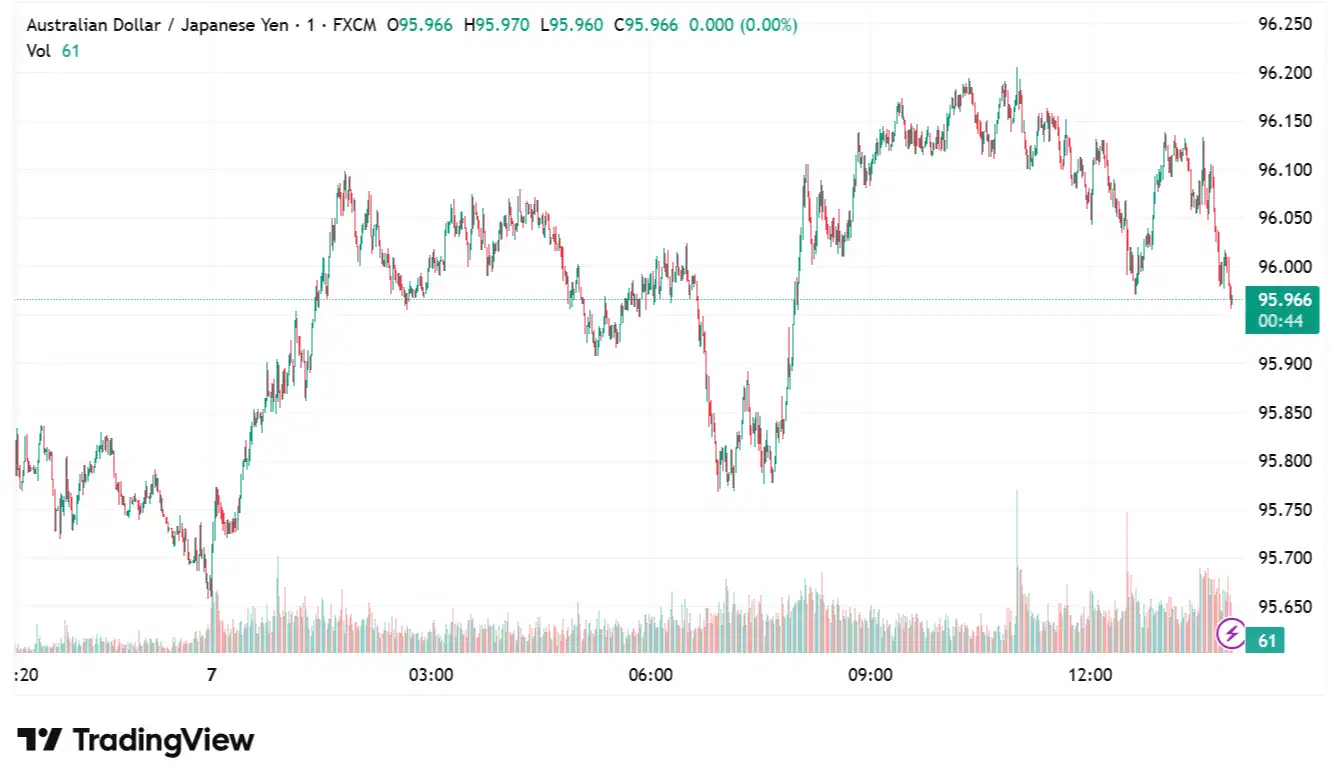
USD/CHF Sinks Ahead of Initial Jobless Claims
USD/CHF dropped to near 0.8049, amid a cautious market mood that limits the downside of the Swiss Franc. The Swiss unemployment rate remained steady for the third consecutive month at a non-seasonally adjusted 2.7% in July 2025, remaining at its lowest level since November 2024. The number of unemployed people increased by 2.3 thousand from the previous month to 129.2 thousand. Meanwhile, the youth unemployment rate, which measures job-seekers aged between 15 and 24 years, rose to 2.7% from 2.5%, with the number of young unemployed increasing slightly by 0.8 thousand to 11.5 thousand. At the same time, the number of reported job vacancies remained largely stable at 39.8 thousand positions during the month. Consumer inflation remained steady in July, according to the CPI figures released on Monday, which showed that annual inflation rose to 0.2% from 0.1% in the previous month, with the monthly CPI unchanged, contrary to expectations of a 0.2% decline, and following a 0.2% increase in the prior month. The weak PMI reading overshadowed the inflation surprise, raising concerns about the Swiss economy's health, especially amid increasing US tariffs. Switzerland faces a steep 39% tariff on exports to the US, and sources indicate that US officials declined Swiss President Karin Keller-Sutter's request for a 10% tariff rate. Ongoing tariff negotiations and a positive risk sentiment are putting pressure on the traditionally safe-haven CHF.
On the greenback front, investors await the US Weekly Initial Jobless Claims data for fresh insights on the USD's movement. The US Nonfarm Payrolls report for July indicated a significant decline in labour market conditions. Additionally, the US ISM Services PMI released on Tuesday emphasised the ongoing economic slowdown amid uncertainty over Trump's unpredictable trade policies. Traders are awaiting further news on the appointment of the next US Federal Reserve (Fed) Chair. President Donald Trump announced on Tuesday that he plans to select the Fed's Chair and Kugler's successor by the end of the week. He is considering White House economic adviser Kevin Hassett, former Fed Governor Kevin Warsh, and two other candidates for the top Fed position. Trump also stated that Treasury Secretary Scott Bessent is not his preferred choice for Fed Chair. Meanwhile, Federal Reserve Bank of San Francisco President Mary Daly said on Wednesday that the Fed still needs to do more to combat inflation, despite making progress overall. Daly noted that the Fed might need to act soon without having all the information.
Investors will pay attention to US Unemployment Claims, labour market data and global risk sentiment for fresh impetus on the USD/CHF exchange rate.
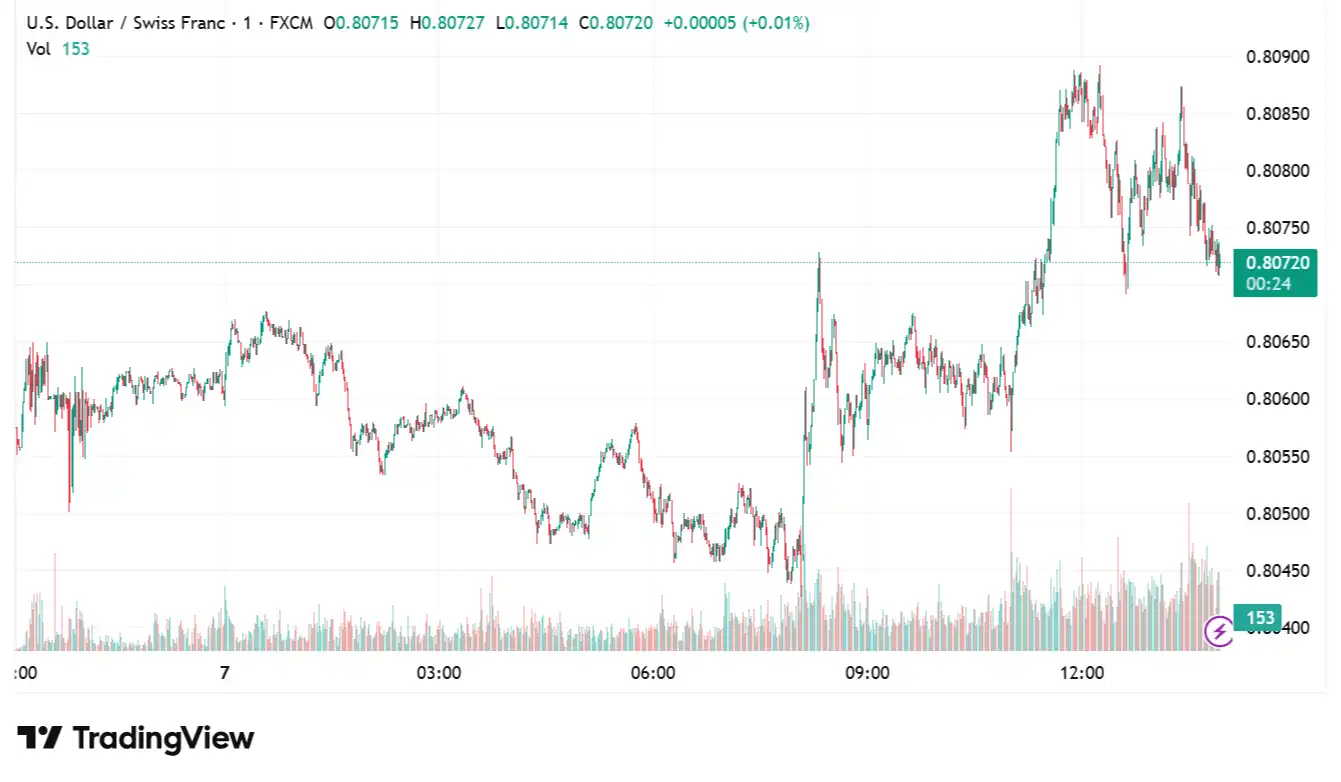
EUR/USD Hovers Amid Hopes of Ukraine Peace Deal
EUR/USD fluctuated near 1.1683 amid hopes of a peace deal in Ukraine and the release of weak German data. Meanwhile, the common currency is gaining support from news about the meeting between US envoy Steve Witkoff and Russian President Vladimir Putin, which has been viewed positively by US President Trump and has fuelled speculation about an upcoming peace summit between Russia and Ukraine. Germany's industrial sector activity showed a larger-than-expected decline in June, dampening the shared currency. In the Eurozone's economic powerhouse, industrial output fell by 1.9% MoM, according to figures adjusted for seasonal and calendar effects released by the federal statistics authority Destatis, compared to the estimated 0.5% decline and a 1.2% growth reported in May. German industrial production slumped 3.6% year-over-year (YoY) in June, versus May's 1% increase. Separately, Germany's trade balance for June stood at EUR14.9 billion compared to EUR17.3 billion expected and EUR18.6 billion previously. The HCOB Services PMI for the entire bloc showed some signs of softening, falling from 51.2 as expected in July to 51. Figures in France and Italy followed suit, with the former dropping to 48.5 from 49.7 in the previous month, and the latter rising from 52.1 to 52.3, but still below estimates. On Monday, the European Union (EU) stated it will delay its planned countermeasures against US tariffs for six months, initially set for this week. Nonetheless, the results of the EU-US trade negotiations are still uncertain. US President Donald Trump has warned that if the EU does not fulfil a controversial investment commitment in the trade deal, a 35% tariff will be applied across the bloc.
The potential upside for the US dollar may be limited due to rising expectations of a Federal Reserve rate cut and concerns about the bank's independence. Traders are closely monitoring the situation regarding the replacement of Fed governors. On Tuesday, Trump announced he would decide on a short-term replacement for Fed Governor Adriana Kugler, who resigned last Friday, and he is also expected to announce a nominee for the next Fed Chair soon. Trump has ruled out Treasury Secretary Scott Bessent as a successor to current Chair Jerome Powell, whose term ends in May 2026. Recent data from the Institute for Supply Management (ISM) shows the Services PMI declined to 50.1 in July, down from 50.8 in June and below the forecast of 51.5. Additionally, the ISM Services Prices Paid increased to 69.9 from 67.5, the Employment Index slightly decreased to 46.4 from 47.2, and the New Orders Index fell to 50.3 from 51.3.
German June Industrial Production, Eurozone Economic Bulletin and US weekly Jobless Claims will be key drivers for the EUR/USD exchange rate.
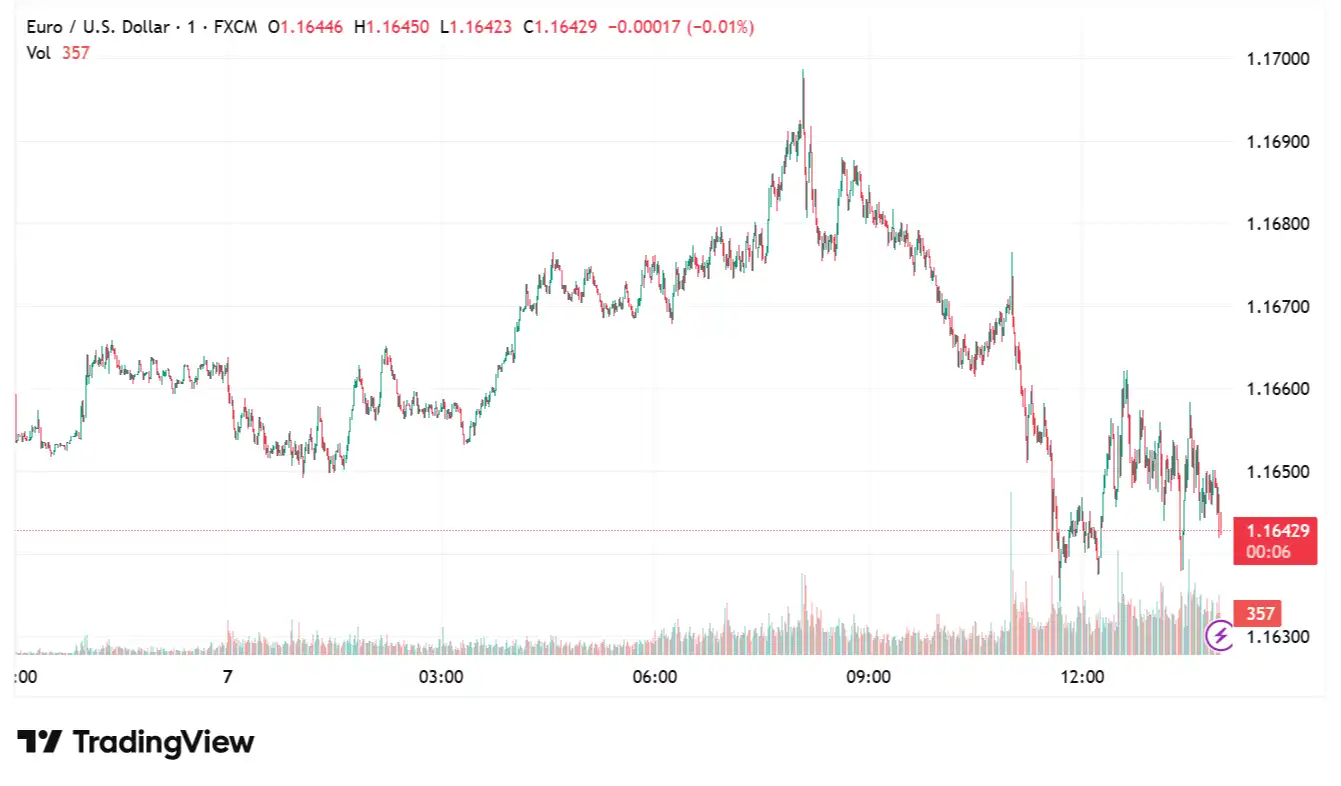
Stay Ahead in the Currency Game
Whether you're a daily FX trader or handle international transactions, our 'Currency Pulse' newsletter delivers regular news you need to make more informed decisions. Get concise updates and in-depth insights directly to your LinkedIn feed.
Subscribe to 'Currency Pulse' now and never miss a beat in the currency markets!
Ready to act on today’s insights? Get a free quote or give us a call on: +44 (0)20 7740 0000 to connect with a dedicated portfolio manager for tailored support.
Important Disclaimer: This blog is for informational purposes only and should not be considered financial advice. Currency Solutions does not take into account the investment objectives, financial situation, or specific needs of any individual readers. We do not endorse or recommend any specific financial strategies, products, or services mentioned in this content. All information is provided “as is” without any representations or warranties, express or implied, regarding its accuracy, completeness, or timeliness.




